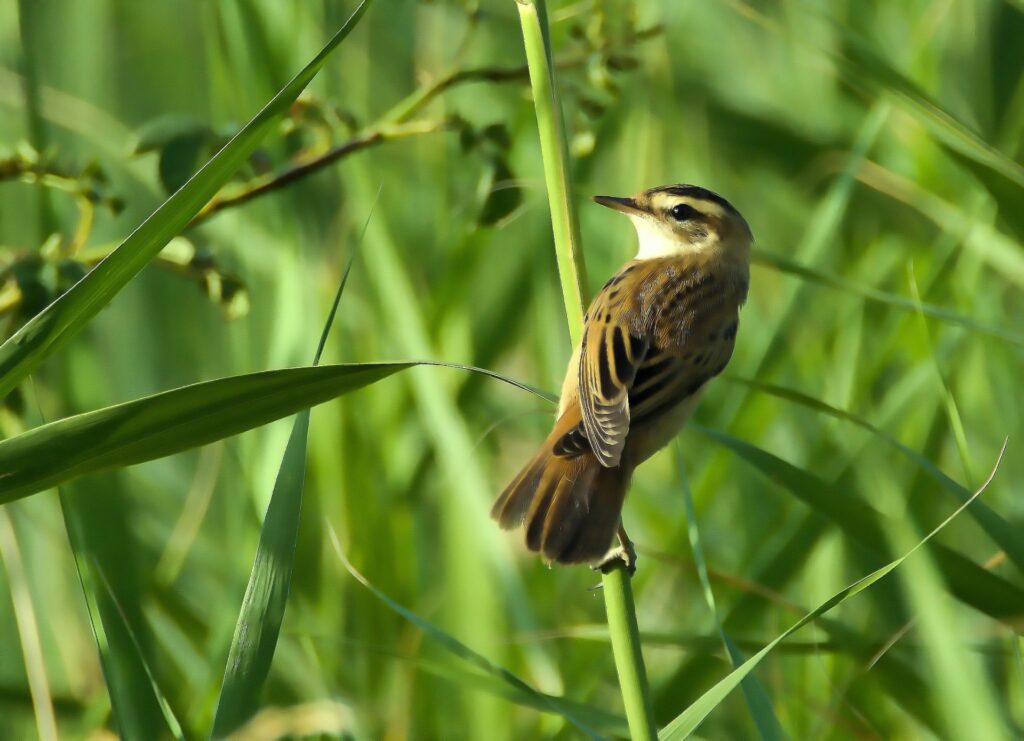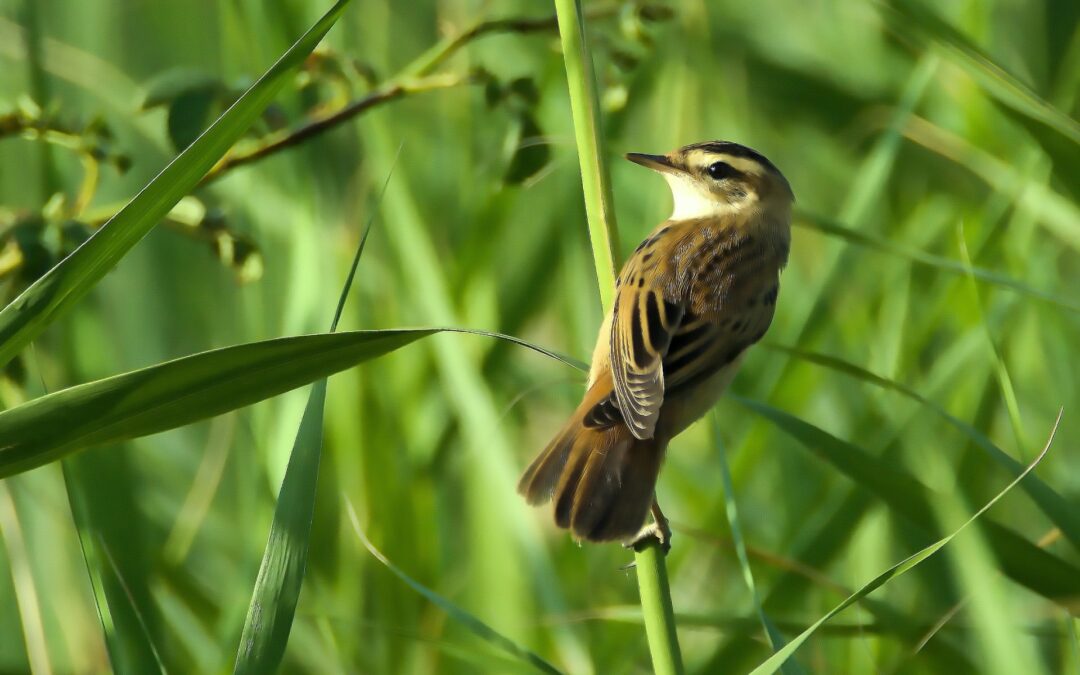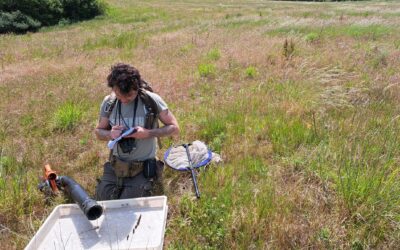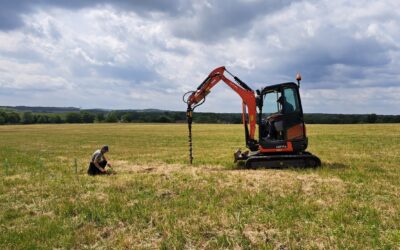I’ve mentioned before that when I first walked around Ewhurst Park it felt strange that it was so quiet – it lacked the sound of birds, insects and animals – which was very different to my childhood in Malaysia, where nature is noisy!
Happily, though, the sound of nature is returning to Ewhurst Park. In particular, we’re seeing new species of nesting birds, while other bird species are dropping by on their migration journeys.
Yesterday was very exciting. We saw a pair of aquatic warblers making a pit stop. Having started their journey in Scandinavia, they are migrating to Zambia – but en route they saw the water in our beaver enclosure and decided to drop in for a rest and a drink.
Earlier in the month, we captured cam footage of some house martins that have joined us. They come back to the same nests every year. They return to the UK in March and April, remaining until September/October before migrating south. They have been put on the ‘UK Birds of Conservation Concern Red List’ because they are in moderate decline, so we’re delighted they’ve found a home with us, nesting on some of our buildings.

Aquatic warbler (publicdomainpictures.net)
Earlier this summer, I walked around Ewhurst Park with Kevin Cox, Chair of RSPB Council, and it was clear that birdlife on the estate is growing in diversity and in number. We’ve encouraged this by constructing deadwood piles and dead hedges (woody cuttings woven between vertical stakes): these teem with insects, which attracts the birds. Likewise, we’ve allowed for more scrubland, which is the transitional habitat where grassland and meadow becomes woodland. Birds love scrub because, again, it’s home to invertebrates.
We’ve seen green sandpipers, curlews and woodlarks. We’ve heard blackbirds, which nest close to the ground. We have snipes living in the beaver enclosure. We think we’ve heard nightjars in our woodland edges, and we’re expecting our short grassland to tempt lapwings.
We’ve even got a nest of lesser spotted woodpeckers in our ancient woodland. It is quite rare to see these birds – you could say they are literally ‘lesser spotted’!
I must admit, ‘twitching’ has come relatively late to me. Growing up in Malaysia, I knew birdwatching was popular because, across the country, we have massive bird parks that are well attended. Indeed, I had a classmate whose parents were enthusiasts, and I learned from her that Malaysia is one of the most popular birdwatching destinations in south-east Asia.
I only started to understand birdwatching later in life, after I had left home. I started travelling for work – visiting a lot of big grey cities. Whenever I returned home, I’d go hiking with my mum – and my eyes were opened! I realised I had been taking Malaysia’s birdlife for granted, and I came to appreciate the beauty and importance of all birdlife.
These days, I think my classmate’s birdwatching parents would be impressed by the work we are doing at Ewhurst Park to encourage a diverse bird population. It helps that we have such a variety of landscapes – different species will be drawn to different parts of the estate: heathland, wetlands, woodland, scrubland.
As for me, my collection of birdsong recordings – captured during my walks around the estate – is growing rapidly.




